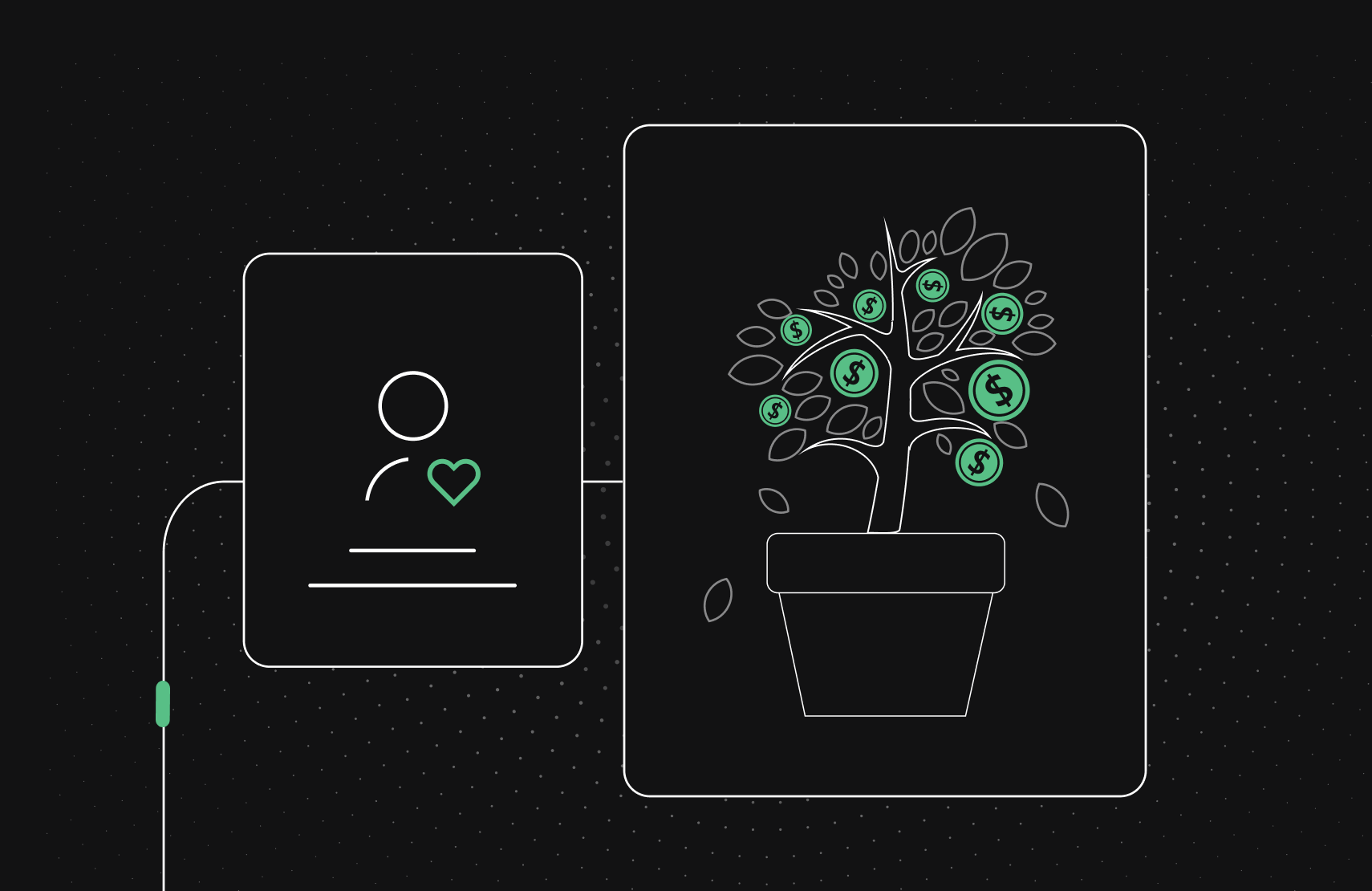Driving B2B E-Commerce ROI by Putting the Customer First: Part 3 of 8

Before developing an ROI model, businesses need to gain a better understanding of their customers and their needs and expectations for digital experiences.
It is useful to conduct qualitative and quantitative research to develop buyer personas and customer journey maps to understand the role digital channels play at every step in the customer experience.
The three ROI drivers of B2B e-commerce are increasing share of wallet, developing new markets, and gaining organizational efficiencies. Businesses must invest in people, infrastructure, and technology upfront and on an ongoing basis to achieve ROI drivers.
A profit and loss projection provides milestones against which you can measure your progress.
I am partnering with fabric this Fall season to revisit concepts in my book Billion Dollar B2B E-Commerce and reflect on how organizations approached these concepts during the height of COVID-19 that pushed more business online. This is part three of an eight-part series.
Previously, we talked about how COVID-19 has created a paradigm shift towards B2B e-commerce and why leadership is the most critical ingredient for overcoming organizational inertia and executing a B2B e-commerce strategy. In this post, we dive into why the B2B customer is critical to the success of your organization and how putting their needs first will drive ROI for your e-commerce business.
When speaking with B2B companies, one of the most common questions I get asked is about the return on investment (ROI) of launching a B2B e-commerce operation. Mainly, managers and executives are concerned about online sales cannibalizing offline sales, so they want to know if digital transformation can achieve the promises of incremental revenue and cost efficiencies.
My answer is simple: evolve or die. This isn’t an “incremental” issue, but an “existential” one. B2B buyer behavior has fundamentally changed, and B2B sales require a digital-first approach. The digital world is quickly moving to the forefront, and companies that ignore these changes are putting themselves in peril.
So while it’s important to think about ROI, firms should be more concerned about the existential crisis they face due to inaction. If companies are worried about the investment costs and documenting the benefits of digital transformation, then they may not be as worried as they should be about the alternative: getting crushed by more nimble digital-first competitors.
That being said, blindly diving into e-commerce is not a strategy. So the next step is to understand the ROI model for your B2B business. Creating specific ROI goals will help establish a roadmap of milestones that will guide you down the path to success. This starts by putting aside what you think you know about your customer and rediscovering who they are and what they want from their digital experience.
[toc-embed headline=”Step One: Putting the Customer First”]
Step One: Putting the Customer First
E-commerce can be transformational for B2B businesses. It is an enormous opportunity for companies that take action, particularly those that are customer-focused and make moves prior to competitors.
Amazon does this extraordinarily well. Amazon is well-known for its relentless customer focus and its unwavering commitment to being Earth’s most customer-centric company. And, by and large, the company has achieved what it set out to do. Now it is a $1.73 trillion enterprise that employs about 1.3 million people all around the world. Moreover, it continues to grow at an incredible pace, and the company is set to overtake Walmart as the largest U.S. retailer in 2022.
Amazon’s incredible success is why I believe the most essential step is to develop a firm understanding of your customers’ expectations for a digital experience. Getting this right is key. Given the potentially large investments, organizational disruption, and time necessary to roll out an e-commerce effort, businesses that neglect the customer could risk sinking significant amounts of capital into an e-commerce platform that no one ever uses.
Rediscover your customers
A number of methods exist to develop an understanding of who your customers really are and what they expect from your digital experience. I recommend employing most or all of these tactics to gain well-rounded insights.
A key element in this discovery process is testing your own assumptions about your customer. Challenge yourself to ask uncomfortable questions and get out of your comfort zone. It helps to seek the assistance of a professional customer research consultant to assist in this process, as internal teams can find it difficult to think objectively or, at minimum, ask the right questions.
How to gain key insights
Customer research works and is critical to understanding how expectations have changed. What are the best ways to research your customers to understand their digital expectations better? Five of the most common tools available today include:
- Customer Surveys
- One-on-One Interviews
- Focus Groups
- Web Analytics and Testing
- Your Sales Team
Once research has been conducted across multiple points of data collection, the next step is to use your findings to develop customer personas. Personas are used as a way to frame and understand a customer’s needs. According to Hubspot, personas are:
“a semi-fictional representation of your ideal customer based on market research and real data about your existing customers. When creating your buyer persona(s), consider including customer demographics, behavior patterns, motivations, and goals. The more detailed you are, the better.”
Using your newly developed customer personas, you’ll then want to move on to customer journey maps. Generally, the five steps of the customer journey are awareness, consideration, acquisition, service, and loyalty. For each step, document how you expect customers to interact with your company, the needs they have, and how you can take action in these important moments.

[toc-embed headline=”Step Two: Defining ROI Drivers and Allocating Capital”]
Step Two: Defining ROI Drivers and Allocating Capital
Now that you have a clear understanding of who your customers are and what they need, it is important to define the ROI drivers in B2B e-commerce for your company. We can divide ROI levers into three distinct categories:
- Increased share of wallet from current customers
- New customer acquisition and market development
- Organizational and revenue efficiencies
In order to achieve any of these ROI drivers, a business must implement a well-functioning system that manages inventory, processes orders, accepts various modes of payment, and delivers a great e-commerce experience. In addition, there are training, process, and policy approaches that must be developed.
One great example is Continental Office, which is a B2B company that offers customized workplace solutions. In 2015, the company embarked on a brand refresh and a complete website redesign which would incorporate buyer personas to provide an engaging user experience complete with relevant content marketing.
Taking a page from B2C, Continental Office used standard online cross-promotion and upselling processes to introduce existing customers to related products that they offered. This helped to increase the share of wallet from customers browsing their product offerings. Here’s an example of a product page for a chair with a “You May Also Like” carousel of related products:

The company also focused on search engine optimization (SEO) and search engine marketing (SEM), set up proper analytics to track traffic and engagement, launched an inbound marketing strategy to increase foot traffic on the site to boost metrics, created an innovative lead scoring system to identify warm leads for the sales team, began nurturing leads by sending regular emails, and aggressively created new value-added content.
In 2015, Continental had 233 employees and generated $129 million in sales. However, a 2017 case study on their digital transformation found that web traffic increased by 1,395% in the first year of the brand refresh and increased 103% from 2015 to 2016. Net-new contacts increased by 645% as well. By 2019, employees had grown to 250 and sales had increased to $135 million.
This leads me to the next part of this article: investment considerations.
Investment Considerations
The adage, “You need to spend money to make money,” is nowhere more apparent than in digital transformation in B2B businesses. There are several upfront investment areas required to effectively enter e-commerce, including people, infrastructure, data preparation, and cross-functional alignment, in addition to the actual technology implementation. I’ll quickly touch on people and technology, which are two of the most essential investments here.
We previously discussed how hiring proven leaders with e-commerce experience would execute the company’s vision and accelerate digital transformation. This should also extend to the staff at all levels, from board members and C-suite level executives down through the organization. Also, to attract the best talent, firms should structure their compensation plans to incentivize success.
Third-party experts may also be considered. Agencies bring a bevy of creative, technical, and business expertise that can accelerate a digital transformation. Not only can they build your new e-commerce website, but they can also help strategize how to optimize it, how to roll it out to your customers and internal stakeholders, and how to develop new workflows that take advantage of the digital tools available to your team.
On the technology side, you should consider your website build and launch costs one of the highest “costs of entry,” ranging from the tens of thousands of dollars at the absolute lowest end to over $10 million for the largest, most complex enterprise implementations.
The range of costs will vary dramatically based on the complexity of your business, current technical systems environment, overall objectives, functional requirements, integration needs, and the level of design and user experience customization. There are also hidden costs as well, which you will need to factor into your ROI calculations.
Additional investments to be aware of include data and product catalog, fulfillment, ongoing costs for people and technology, and incremental marketing investments.
Tying It All Together
The cost and return elements described so far should make their way into a profit and loss projection that will provide a set of milestones you can measure against as you execute.
Below is an example of how this might look for a mid-market B2B company, integrating the components of revenue improvement, gross profit enhancement, and cost savings (efficiencies) to calculate something called Net Present Value (NPV) of an investment in e-commerce over a five year period. NPV is a measure of the value of an investment in current dollars and is commonly used in financial organizations as a way to determine the worthiness of an investment.


B2B e-commerce expert and author of Billion Dollar B2B E-Commerce.